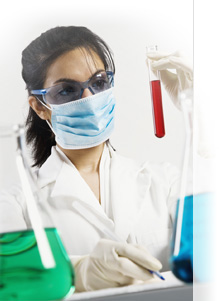Acne
Acne affects millions of people worldwide of both genders and all races. Though the vast majority of adolescents develop some form of acne, there also exists a significant prevalence of acne in adults.
What are the factors that contribute to the developing of Acne?
There are four main factors which contribute to the development of acne lesions: 1) plugging of the follicles by debris from skin cells; 2) inflammation in the skin surrounding the follicles; 3) increased production of sebum (oily secretions) by the sebaceous glands; and 4) the presence of the bacteria Propionibacterium acnes within the follicle. In each individual, these causes may contribute in varying degrees to the onset and duration of acne as well as the type of acne that predominates in a given person. Hormones, genetics, medications, hair or skin care practices, and other factors may contribute to the development of acne.
What are the different types of acne?
There are several different types of acne lesions and each individual may have predominantly one form of acne or a combination of lesions present at one time. Acne commonly occurs on the face but can also arise on the neck, chest, back, and upper arms.
- Comedones — Comedones are considered non-inflammatory acne lesions and may be open or closed. Closed comedones or whiteheads are small plugged follicles, the contents of which are not exposed to the skin. Open comedones or blackheads are small follicles with dilated openings to the skin allowing oxidation of the debris within the follicle leading to the black color. Though many believe these lesions represent dirt, they cannot be washed away and are not representative of poor hygiene.
- Inflammatory acne — When lesions become red and/or tender bumps they are termed papules. These can fill with purulent material forming pus bumps or pustules. Papules and pustules represent inflammatory acne lesions, which originate as comedones.
- Nodular acne — As lesions progress to become larger and more tender, they are termed nodules.
- Nodulocystic acne — Cysts are deep, fluid-filled lesions and when these occur along with nodules, the term nodulocystic acne is used.
Other skin lesions that may occur as a consequence of acne lesions themselves or from the manipulation of lesions include pitted scars, dark marks or post inflammatory hyperpigmentation, and large keloidal scars.
What is the treatment for acne?
The treatment of acne is aimed at attacking one or more of the underlying pathogenic factors contributing to its development. Some of the most common and effective treatments are topical therapies. These include retinoid (derivatives of vitamin A), benzyl peroxide, topical antibiotics, azelaic or salicylic acid, or combinations thereof. Topical retinoids are particularly effective for comedonal acne. Common side effects of these medications are dryness and irritation of the skin, which can be improved by changing the dosing, or formulation of the topical medication or even adding an oil-free moisturizer to the skin care regimen. For more inflamed or severe acne, systemic medications like antibiotics may be helpful. These both act through anti-inflammatory as well as antibiotic effects. Certain oral contraceptives or other hormonal therapies may be used in women whose acne tends to flare according to their menstrual cycle. Lastly, isotretinoin is an effective systemic retinoid medication that is used for severe nodulocystic or recalcitrant acne. Other available treatments include extraction, injection of steroids into inflamed lesions, photodynamic therapy, or chemical peels. There are also many options for the management of scarring or dark spots resulting from resolved acne lesions.
More information may be found at the following websites:




